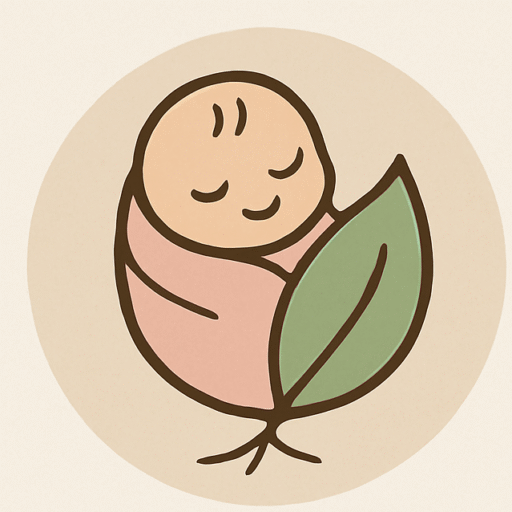Calm Parenting: Staying Cool in Tantrums
Helping your child feel safe, even in emotional storms
🌿 The Day I Chose Calm Over Control
Emma’s 3-year-old son was lying face-down in the living room, screaming because his toast was cut the “wrong way.” She felt her chest tighten. The urge to yell rose quickly. But instead of losing control, she paused, took a breath, and sat beside him. “It’s okay to be upset,” she whispered. Slowly, his sobs quieted. He climbed into her lap.

That moment didn’t fix everything. But it changed something. It was the start of parenting with calm—not control.
1. Know That Tantrums Are Normal
Tantrums are a normal and healthy part of development. Toddlers aren’t being manipulative—they’re simply overwhelmed. Their brains are still learning how to manage frustration, disappointment, and transitions.
Knowing this helps us respond with empathy instead of frustration.
2. Your Calm Helps Regulate Their Chaos
When your child is losing control, your calmness becomes their emotional anchor. They look to you—even unconsciously—for cues about how to respond to their big feelings.
Pause. Take a slow breath. Speak softly. Your energy sets the tone.
Say to yourself:
“This is not an emergency. I can stay grounded.”

3. Validate the Feeling First
Instead of rushing to fix or correct, start by showing your child that their feelings are seen and safe.
Try saying:
“You’re really sad we had to leave the park.”
“That was frustrating when your block tower fell.”
“It’s okay to be mad.”
Validation doesn’t mean agreeing—it means connecting.
4. Don’t Try to Teach Mid-Tantrum
Tantrums happen when the logical brain goes offline. Teaching, explaining, or punishing during a meltdown won’t help.
Avoid saying things like:
“Stop crying or I’ll take your toy away.”
“Why are you acting like this?”
Instead, focus on staying close and letting the storm pass.

5. Use Gentle Reassurance
When your child is upset, your calm words and presence help soothe them more than any strategy.
Say things like:
“I’m here.”
“You’re safe. I love you.”
“We’ll get through this together.”
Even if they don’t respond, your presence matters.
6. Support Their Body, Too
Sometimes a child needs physical comfort to settle.
Offer:
- A gentle hug if they want it
- A sip of water
- A soft blanket or stuffed toy
- Sitting quietly in a cozy corner together
Helping their body calm down supports their emotional regulation.
7. Don’t Take It Personally
Your child’s meltdown is not about you. It’s not proof that you’re failing. It’s just a child doing the best they can with the skills they have.
When you feel triggered, remind yourself:
“This is hard, but I can handle it.”
“My child isn’t giving me a hard time—they’re having a hard time.”
8. Reconnect After the Storm
After the tantrum passes, reconnect with love—not lectures.
You might say:
“That was a big feeling.”
“You calmed down all by yourself. I’m proud of you.”
“Next time, let’s try to take deep breaths together.”
Use these moments to build emotional awareness, not shame.
9. Take Care of Your Own Calm
You’re human too. And sometimes staying calm feels impossible. That’s okay.
Ways to protect your own calm:
- Step away safely when you need a break
- Take deep breaths, stretch, or splash water on your face
- Let go of guilt for not being perfect
- Talk to a friend or therapist about the tough days
Your calm is a muscle—one that gets stronger with care and practice.
10. Prepare for Tantrums Ahead of Time
Not all meltdowns can be prevented, but some can be eased with preparation.
Tips to reduce tantrum triggers:
- Give 5-minute warnings before transitions
- Offer choices where you can (“Blue cup or red cup?”)
- Watch for signs of hunger, tiredness, or overstimulation
- Keep routines predictable and simple
Preparing doesn’t mean eliminating tantrums—it means building resilience.

11. Teach Regulation When Calm
The best time to teach emotional skills is not during the tantrum—but after.
Practice with your child during calm moments:
- Deep breathing with stuffed animals
- Naming feelings with picture books
- Role-playing difficult situations
- Creating a calm-down corner at home
These moments lay the foundation for better regulation over time.
12. Celebrate Progress, Not Perfection
There will still be rough days. You will still lose your cool sometimes. But every moment of connection counts.
Celebrate when your child:
- Uses words instead of yelling
- Tries a calming strategy
- Accepts comfort or self-soothes
Celebrate when you pause, breathe, and stay present. That’s growth—for both of you.
🌈 Final Thoughts: Calm is a Gift You Both Deserve
Parenting through tantrums with calm doesn’t mean staying silent or giving in. It means choosing presence over punishment. Connection over control.
Each time you meet a meltdown with softness, you teach your child that big feelings are not scary—and that they’re never alone.
You won’t get it right every time. And that’s okay. What matters most is that you keep showing up with love.
💾 Save & Share
📌 Like this post? Pin it to your Gentle Parenting board on Pinterest
💬 What helps you stay calm during your child’s tantrums? Share in the comments below








